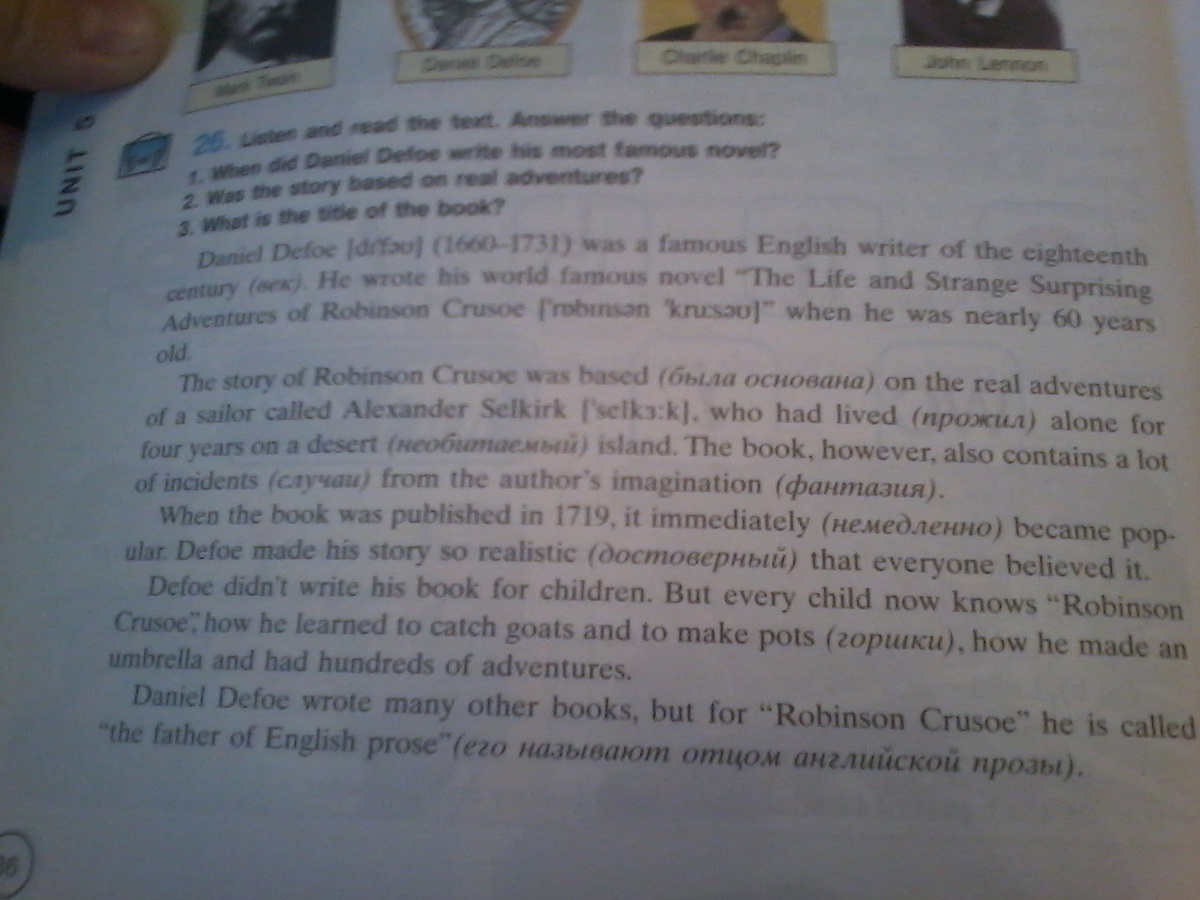Предмет: Английский язык,
автор: ankasewruck70
Переведит!!!!! ((**((
Приложения:

Ответы
Автор ответа:
1
Даниэль Дефо был известным английским писателем в 18 веке. ОН написал всемирно известный роман "Приключения Робинзона Крузо" когда ему было 60 лет.
История Робинзона Крузо была основана на реальных приключениях моряка которого звали Александр (фамилию не поняла), который прожил 4 года не необитаемом острове. Книга также содержит авторские фантазии.
Когда книга в 1719 году была опубликована, она сразу стала популярной.Дефо сделал свою историю достоверной, чтобы ему поверили все.
Дефо не писал книги для детей.Но каждый ребенок сейчас знает "Приколючения Робинзона Крузо", как он делал горшки, как делал зонтики и попадал в сотни приключений.
Даниель Дефо написал много разных книг, но за Робинзона Крузо его называют отцом английской прозы..
Вот как то так=)))
История Робинзона Крузо была основана на реальных приключениях моряка которого звали Александр (фамилию не поняла), который прожил 4 года не необитаемом острове. Книга также содержит авторские фантазии.
Когда книга в 1719 году была опубликована, она сразу стала популярной.Дефо сделал свою историю достоверной, чтобы ему поверили все.
Дефо не писал книги для детей.Но каждый ребенок сейчас знает "Приколючения Робинзона Крузо", как он делал горшки, как делал зонтики и попадал в сотни приключений.
Даниель Дефо написал много разных книг, но за Робинзона Крузо его называют отцом английской прозы..
Вот как то так=)))
ankasewruck70:
Вы супер умный человек! *0*
Да ладно вам=)
Да))))
Похожие вопросы
Предмет: Английский язык,
автор: tetetma
Предмет: Другие предметы,
автор: bizya2021
Предмет: Немецкий язык,
автор: Murky123
Предмет: Русский язык,
автор: annatara16